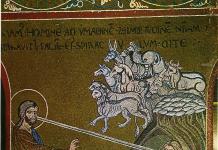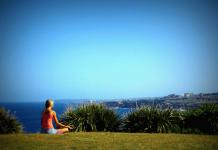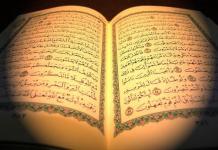Modern Europeans' ideas about the Ottoman Empire, as a rule, are a collection of vague images drawn from ancient novels and their film adaptations. Harems, odalisques, and, of course, the famous Turkish Janissaries. Our fellow citizens also know that the latter did not feel pity for anyone, as the hero of the famous novels by I. Ilf and E. Petrov Ostap Bender said. He called himself the son of a Turkish subject, but given the adventurous nature of the character. this assertion may well be questioned. So who were these terrible warriors who made up the stronghold and elite of the Sultan’s army?
Emir Orhan and his new army
It is believed that the Janissary army was created in the second half by the Ottoman Sultan Murad the First as a special branch of the armed forces, or, in modern terms, special forces. But this event was preceded by a certain prehistory dating back to the 20s of the same century.
Nothing in military affairs is undertaken just like that, on a whim. The impetus for the creation of a special corps was the low discipline in the troops of Emir Orhan, who in 1326 managed to occupy the city of Bursa, ousting the Byzantine Empire. Victory was achieved, but as a true commander, Orhan analyzed the reasons for the large losses and many other unpleasant moments that arose during the battle, and came to the conclusion that the Turks were fighting poorly, and success was facilitated rather by the even worse training of the enemy troops than by the valor and skill of his own army. Reform was needed, a new type of warrior was required. Hence the name (“yeni” - new, “ceri” - army). Thus, the history of the Janissaries begins in the twenties of the 14th century, and Emir Orhan is rightfully considered the founder of Turkish special forces.

Why didn't the Turks approach?
Any special forces are staffed with selected soldiers. During the time of the sultans and emirs, the citizens of the Ottoman Empire were free and prosperous people; the abundance of previously captured territories, the exploitation and plunder of the population of the occupied regions of the Balkans created the conditions for a fairly satisfying and comfortable life, which had a relaxing effect. The Turks did not really want to fight, they did not want to die heroically, and it was even more difficult to talk about the necessary use of cruel measures against fellow tribesmen in the event of riots or other popular unrest. And Orhan turned to world experience. He needed obedient slaves, loyal and merciless. If Turks cannot be like that, then nukers should be recruited from foreigners. Such were the Persian bodyguards of the 9th century and the guards of the ancient Indian rajas.
Azab-bachelors
The first attempt to create punitive special forces was the formation of the Azab corps, staffed by captured Christians from Bulgaria, Albania, Serbia and other territories occupied by Ottoman troops. Warriors joined enemy banners voluntarily and forcibly, under pain of death. They were forbidden to marry, which is why they were called Azabs (in Turkish - bachelors).
From further history, including recent history, it is known that units recruited from collaborators are not distinguished by high combat effectiveness. At best, they can be used as auxiliary occupation police, but responsible sections of the front cannot be trusted; they will either run away or immediately go over to the side of their fellow tribesmen, repent, and, most likely, will be forgiven.

Orhan decided wisely. Adult captives are not suitable. The Ottoman Janissaries (new warriors) should not remember kinship, forget their father and mother, then they will be endlessly devoted to the empire to him personally. They need to be raised and educated. Who is needed for this? Children!
Preparation and training
In addition to the usual taxes and taxes, the inhabitants of the lands seized by the Ottoman Empire in the 30s of the 14th century were assigned another duty, perhaps the most terrible. The strongest and most savvy boys aged 12-16 were taken from their parents and taken to Turkey. Now a completely different, non-peasant fate awaited them.
The importance of ideological training was realized by the military leadership of the Ottoman Empire. Future Turkish Janissaries received a new name, converted to Islam and underwent initial adaptation in families, where they mastered the Turkish language perfectly, forgetting their native speech and culture along the way. Then there was a military school.

Military school in Adrianople
At the age of 21, a prepared young man brought up in the spirit of devotion arrived at the main location of the Janissary corps. This was the city of Adrianople, and the oath ceremony took place here. The oath of allegiance was taken by the dervishes, who performed the functions of confessors and political instructors at the same time.
The preparation of ajami (beginners) included lessons in fencing, shooting, and tactical skills. Classes were conducted according to a group system, the training unit consisted of 10 to 15 cadets, future Janissaries. the training lasted six years.
But the matter was not limited to drill.
A real warrior must know not only military affairs. A broad outlook and developed intelligence are the qualities that a true Janissary must have. This makes it possible to make non-standard decisions in critical situations. Knowledge of the Koran brings a warrior closer to Allah, so theology was one of the most important subjects in military school. Christian teaching was a separate important subject. Classes in law, literature and foreign languages were also included in the intensive training program.
Discipline
In medieval Europe, service people loved to spend their leisure time in feasts and revelry. The life of a soldier in the era of constant wars and state redistributions was, as a rule, short-lived, and future victims of war wanted to take their share on earth, before the soul flew to heaven. European travelers who saw the Adrianople barracks, the place of training of the “new army,” were surprised by the harsh conditions of the Janissaries. This was unusual; the cadets, always calm and calm, spent all their time, with the exception of perhaps sleeping, in drills and studies. They had never even heard of cards or dice; alcoholic libations were a religious taboo. Iron discipline, stoic patience and ascetic simplicity of life - these are the conditions in which a true warrior is raised. Based on the stories of the Habsburg envoy von Busbeck, who visited Istanbul, a myth about the invincibility of the Ottoman Empire even arose in Europe.

Customs, traditions and uniforms
In addition to the vow of celibacy, which was in force until 1556, there were other prohibitions, for example, on wearing a beard, which could only be allowed by an officer - the commander of the Janissaries. Each unit, called an arc, traditionally had a cauldron (cauldron), from which the personnel ate food they prepared themselves. It was considered a kind of symbol and amulet and was kept in exemplary cleanliness. A sign of discontent or rebellion (they happened) was an overturned cauldron. The uniform changed from century to century, but at its core the Janissary corps was infantry troops equipped with light armor. The clothing of the Turkish special forces and the Zaporozhye Cossacks had a lot in common. thanks to their loose cut, they did not restrict movement in battle, and the “burke” (hat with a flap) was stuffed with horsehair and served as head protection, like a helmet. The Janissary's mace and curved saber completed the warlike appearance.

Reforms
Such a well-prepared militarily and highly intellectual class could not long tolerate the role assigned to it as a blind instrument in the hands of the Sultan. Cunning combined with strength encourages the unjustly humiliated to fight for power. The Janissary commander, taking advantage of his privileges, pushed aside the Sultan's governors from exercising their powers at every opportunity, expressing claims to greater freedoms and powers.
In the 16th century, traditions that seemed unbreakable underwent changes; ethnic Turks began to be accepted into the corps of the monarch's chosen servants. Despite the modest salary, paid once every 3-4 months, service in the special forces is considered prestigious. This is facilitated by the high quality of education and the growing social influence of the “new soldiers”. In addition, upon retirement due to length of service, the Janissaries received unlimited career opportunities. For the admission of their offspring into their ranks, Turkish parents often gave a substantial “baksheesh”, in other words, a bribe.
This situation could not last long.

End of the Janissary era
Among people interested in history, there is still no single answer to the question: “Were the Janissaries traitors?” However, reasoning logically, we can come to the conclusion that only those who consciously and in adulthood went over to the side of the enemy and did this to obtain some personal benefits can be accused of treason. Children taken from their parents were brainwashed for many years, they were instilled with the idea that the rule of the Sultan, their “father,” was just. To give the Ottoman ruler his due, he truly treated his personal guards-bodyguards, especially trusted punitive officers, elite warriors and part-time police officers as his own children. For three centuries, the Janissary's saber fell without fail on the heads of the rebellious, regardless of whether they were foreigners or Turks. But in the 19th century, the proven instrument began to fail.
In the summer of 1826, the Janissary corps rebelled against new laws adopted by Sultan Mahmud II. A crowd of armed “bashi-bazouks” tried to storm the ruler’s residence in Istanbul. The rebellion was mercilessly suppressed, the Janissary corps was disbanded, and they themselves were almost all exterminated.
Expansion of the foreign policy expansion of the young Ottoman state at the beginning of the 14th century. gave rise to the need to create regular and disciplined infantry both for the siege of Christian fortresses and for large-scale aggression in Europe. However, the Turks, with their traditions of nomadic life and unorganized mounted combat, preferred to fight as part of light cavalry (akinci). After unsuccessful attempts to create unified infantry units from the sons of Ottoman horsemen and from Muslim mercenaries, Sultan Orhan (1326-1359) organized in 1330 a detachment of infantry from captured Christians who voluntarily or forcedly converted to Islam (1000 people). In an effort to make it a striking force in wars against the “infidels,” the Sultan immediately tried to give it a religious character by connecting it with the Bektashie dervish order; perhaps he was guided by the model of a Christian military monastic order. According to legend, the head of the order, Khachi Bektash, at the inauguration ceremony of the detachment, tore off the sleeve from his white robe, placed it on the head of one of the warriors (and so that part of it hung on the back of his head), called him “Janissary” (“new warrior”) and gave your blessing. From that time on, the Janissary corps was formally considered part of Bektashie, and Khachi Bektash was its patron saint; members of the order served as military chaplains; The Janissaries' headdress was a hat with a piece of fabric attached to the back.
In the middle of the 14th century. the need to increase the new army encountered two obstacles: the lack of captured Christian soldiers and their unreliability. This prompted Sultan Murad I (13591389) to change the method of recruitment in 1362: from now on, the corps was recruited from children of the Christian faith captured during campaigns in the Balkans, who underwent special military training. By the beginning of the 16th century. this practice turned into a compulsory duty imposed on the Christian population of the Balkan provinces, primarily Albania, Greece and Hungary: every fifth/seventh year (in the later period even more often) special officials selected 1/5 of all boys between the ages of seven and fourteen (the so-called “Sultan’s share”) to serve in the Janissary corps.
This system, which soon became the basis for major abuses, caused overt and covert resistance on the part of the conquered Christian peoples: from uprisings and flight outside the Ottoman Empire to various tricks when parents exploited loopholes in the legislation, in particular the ban on taking married people who had converted to Islam (married boys even in infancy, converted them to the Muslim faith). The Turkish authorities brutally suppressed attempts at outrage and reduced the number of legal means of evasion. At the same time, some poor parents willingly gave their children to the Janissaries, thereby wanting to give them the opportunity to escape poverty and rid the family of extra mouths to feed.
Schweizer G. Die Janitscharen: gemeine Macht des Türkenreiches. Salzburg, 1979
Goodwin G. The Janissaries. London, 1997
Sergeev V.I. Janissaries: Sword of Islam: The Art of War of the Early 19th Century. AD. Rostov-on-Don, 2000
Almost all great powers had their own military classes and special troops. In the Ottoman Empire these were the Janissaries, in Russia - the Cossacks. The organization of the Janissary corps (from “yeni cheri” - “new army”) was based on two main ideas: the state took upon itself the entire maintenance of the Janissaries so that they could devote all their time to combat training without reducing their fighting qualities in normal times; to create a professional warrior, united in a military-religious brotherhood, like the knightly orders of the West. In addition, the Sultan's power needed military support, loyal only to the supreme power and no one else.
The creation of the Janissary Corps became possible thanks to the successful wars of conquest waged by the Ottomans, which led to the accumulation of great wealth by the sultans. The appearance of the Janissaries is associated with the name of Murad I (1359-1389), who was the first to assume the title of Sultan and made a number of major conquests in Asia Minor and the Balkan Peninsula, formalizing the creation of the Ottoman Empire. Under Murad, they began to form a “new army,” which later became the striking force of the Turkish army and a kind of personal guard of the Ottoman sultans. The Janissaries were personally subordinate to the Sultan, received salaries from the treasury, and from the very beginning became a privileged part of the Turkish army. Submission to the Sultan personally was symbolized by the “burke” (aka “Yuskuf”) - a kind of headdress of the “new warriors”, made in the form of the sleeve of the Sultan’s robe - they say that the Janissaries are under the hand of the Sultan. The commander of the Janissary corps was one of the highest dignitaries of the empire.
The supply idea is visible throughout the Janissary organization. The lowest cell in the organization was a department - 10 people united by a common pot and a common pack horse. 8-12 squads formed an ode (company), which had a large company cauldron. In the 14th century, there were 66 odes of the Janissaries (5 thousand people), and then the number of “odes” increased to 200. The commander of an ode (company) was called chorbaji-bashi, that is, a distributor of soup; other officers had the rank of “chief cook” (ashdshi-bashi) and “water carrier” (saka-bashi). The name of the company - ode - meant a common barracks - a bedroom; The unit was also called “orta”, i.e. herd. On Fridays, the company cauldron was sent to the Sultan's kitchen, where pilaf (pilaf, a dish based on rice and meat) was prepared for the soldiers of Allah. Instead of a cockade, the Janissaries stuck a wooden spoon into the front of their white felt cap. In a later period, when the corps of the Janissaries had already disintegrated, rallies took place around the military shrine - the company cauldron, and the refusal of the Janissaries to taste the pilaf brought from the palace was considered the most dangerous sign of rebellion - a demonstration.
The care of the education of the spirit was entrusted to the Bektashi Sufi order of dervishes. It was founded by Hadji Bektash in the 13th century. All Janissaries were assigned to the order. The 94th Orta symbolically included the sheikhs (babas) of the brotherhood. Therefore, in Turkish documents, the Janissaries were often called the “Bektash partnership”, and the Janissary commanders “Aga Bektashi”. This order allowed certain liberties, such as drinking wine, and contained elements of non-Muslim practices. The Bektashi teaching simplified the basic tenets and requirements of Islam. For example, it made five times daily prayer optional. Which was quite reasonable - for an army on a campaign, and even during military operations, when success depended on the speed of maneuver and movement, such delays could become fatal.
The barracks became a kind of monastery. The Dervish Order was the only educator and teacher of the Janissaries. Dervish monks in Janissary units played the role of military chaplains, and were also responsible for entertaining the soldiers with singing and buffoonery. The Janissaries had no relatives, for them the Sultan was the only father and his order was sacred. They were obliged to engage only in military craft (during the period of decomposition the situation changed radically), in life to be content with military spoils, and after death to hope for paradise, the entrance to which was opened by the “holy war”.
At first, the corps was formed from captured Christian teenagers and young men aged 12-16. In addition, the Sultan's agents bought young slaves at the markets. Later, due to the “blood tax” (devshirme system, that is, “recruitment of children of subjects”). It was imposed on the Christian population of the Ottoman Empire. Its essence was that every fifth immature boy was taken from the Christian community as slaves of the Sultan. An interesting fact is that the Ottomans simply borrowed the experience of the Byzantine Empire. The Greek authorities, experiencing a great need for soldiers, periodically carried out forced mobilization in areas inhabited by Slavs and Albanians, taking away every fifth youth.
Initially it was a very heavy and shameful tax for the Christians of the empire. After all, these boys, as their parents knew, in the future became terrible enemies of the Christian world. Well-trained and fanatical warriors who were of Christian and Slavic origin (mostly). It is worth noting that the “slaves of the Sultan” had nothing in common with ordinary slaves. These were not slaves in chains who did hard and dirty work. Janissaries could reach the highest positions in the empire in the administration, military or police formations. At a later time, by the end of the 17th century, the Janissary corps was already formed primarily on the hereditary, class principle. And rich Turkish families paid a lot of money to have their children accepted into the corps, since there they could get a good education and make a career.
The children, forcibly torn away from their parents' home, spent several years in Turkish families to force them to forget their home, family, homeland, and to learn the basics of Islam. Then the young man entered the institute for “inexperienced boys” and here he developed physically and was educated spiritually. They served there for 7-8 years. It was a kind of mixture of a cadet corps, a military “training” school, a construction battalion and a religious school. Devotion to Islam and the Sultan was the goal of this education. The Sultan's future warriors studied theology, calligraphy, law, literature, languages, various sciences and, of course, military affairs. In their free time from school, students were used for construction work - mainly in the construction and repair of numerous fortresses and fortifications. The Janissary did not have the right to marry (marriage was prohibited until 1566), was obliged to live in the barracks, silently carry out all the orders of his elder, and if a disciplinary sanction was imposed on him, he had to, as a sign of submission, kiss the hand of the one who imposed the punishment.
The devshirme system arose after the formation of the Janissary corps itself. Its development slowed down during the turmoil that followed Tamerlane's invasion. In 1402, at the Battle of Ankara, the Janissaries and other units of the Sultan were almost completely destroyed. Murad II revived the devshirme system in 1438. Mehmed II the Conqueror increased the number of Janissaries and increased their salaries. The Janissaries became the core of the Ottoman army. In later times, many families themselves began to send their children so that they could receive a good education and make a career.

The main weapon of the Janissaries for a long time was the bow, in the use of which they achieved great perfection. The Janissaries were foot archers and excellent marksmen. In addition to the bow, they were armed with sabers and scimitars, and other bladed weapons. Later, the Janissaries were armed with firearms. As a result, the Janissaries were at first light infantry, with almost no heavy weapons or armor. With a serious enemy, they preferred to conduct a defensive battle in a fortified position, protected by a ditch and light obstacles placed in a circle with baggage carts (“camp”). Moreover, in the initial period of development they were distinguished by high discipline, organization and fighting spirit. In a strong position, the Janissaries were ready to confront the most serious enemy. Chalkondylos, a Greek historian of the early 15th century, being a direct witness to the actions of the Janissaries, attributed the successes of the Turks to their strict discipline, excellent supplies, and concern for maintaining communication routes. He noted the good organization of the camps and auxiliary services, as well as the large number of pack animals.
The Janissaries had much in common with other military classes, in particular with the Cossacks. What they had in common was the active defense of their civilization and homeland. Moreover, these classes had a certain mystical orientation. For the Janissaries, this was a connection with the Sufi order of dervishes. Both the Cossacks and the Janissaries had their main “family” as their military brothers-in-arms. Like the Cossacks in kurens and villages, the Janissaries all lived together in large monastery barracks. The Janissaries ate from the same cauldron. The latter was revered by them as a shrine and symbol of their military unit. Among the Cossacks, cauldrons stood in the place of honor and were always polished to a shine. They also played the role of a symbol of military unity. Initially, the Cossacks and Janissaries had a similar attitude towards women. Warriors, as in the monastic orders of the West, did not have the right to marry. The Cossacks, as you know, did not allow women into the Sich.
Militarily, the Cossacks and Janissaries were a light, mobile part of the army. They tried to take by maneuver and surprise. In defense, both of them successfully used a ring defensive formation of baggage carts - a “camp”, dug ditches, built palisades, and obstacles from stakes. Cossacks and Janissaries preferred bows, sabers, and knives.
An essential feature of the Janissaries was their attitude to power. For the Janissaries, the Sultan was the undisputed leader, the father. During the creation of the Romanov Empire, the Cossacks often proceeded from their own corporate interests and from time to time fought against the central government. At the same time, their performances were very serious. The Cossacks opposed the center both during the Time of Troubles and during the time of Peter I. The last major action took place during the time of Catherine the Great. The Cossacks maintained their internal autonomy for a long time. Only in the later period did they become unconditional servants of the “Tsar-Father”, including in suppressing the actions of other classes.
Among the Janissaries, evolution went in a different direction. If initially they were the most devoted servants of the Sultan, then in the later period they realized that “their shirt is closer to the body” and after that it was no longer the rulers who told the Janissaries what to do, but vice versa. They began to resemble the Roman Praetorian guards and shared their fate. Thus, Constantine the Great completely destroyed the Praetorian Guard, and destroyed the Praetorian camp as “a constant nest of rebellion and debauchery.” The Janissary elite turned into a caste of “chosen ones”, which began to remove the sultans at will. The Janissaries turned into a powerful military-political force, a threat to the throne and eternal and indispensable participants in palace coups. In addition, the Janissaries lost their military importance. They began to engage in trade and craft, forgetting about military affairs. The previously powerful corps of Janissaries lost real combat effectiveness, becoming a weakly controlled, but heavily armed gathering that threatened the supreme power and defended only its corporate interests.
Therefore, in 1826 the building was destroyed. Sultan Mahmud II began military reform, transforming the army along European lines. In response, the capital's Janissaries rebelled. The uprising was suppressed, the barracks were destroyed by artillery. The instigators of the riot were executed, their property was confiscated by the Sultan, and the young Janissaries were expelled or arrested, some of them entered the new army. The Sufi order, the ideological core of the Janissary organization, was also dissolved, and many of its followers were executed or expelled. The surviving Janissaries took up crafts and trade.
It is interesting that the Janissaries and Cossacks even looked alike. Apparently, this was the common heritage of the military classes of the leading peoples of Eurasia (Indo-European-Aryans and Turks). In addition, we should not forget that the Janissaries were initially also predominantly Slavs, albeit from the Balkans. The Janissaries, unlike the ethnic Turks, shaved their beards and grew long mustaches, like the Cossacks. Janissaries and Cossacks wore trousers similar to the Janissary “burke” and a traditional Zaporozhye hat with a shlyk. The Janissaries, like the Cossacks, have the same symbols of power - horsetails and maces.
The Janissaries were the elite warriors of the Ottoman Empire. They guarded the Sultan himself and were the first to enter Constantinople. The Janissaries were prepared for service from early childhood. Disciplined, fanatical and absolutely loyal to the Sultan, they lived for war.
Slave Army
At the beginning of the 14th century, the young Ottoman state had an urgent need for high-quality infantry, since the capture of fortresses by siege was too long-term and resource-intensive (the siege of Brusa lasted longer than 10 years).
In the Ottoman army of that time, the main striking force was cavalry, which was of little use for assault tactics. The infantry in the army was irregular, hired only for the duration of the war. Of course, the level of her training and devotion to the Sultan left much to be desired.
Sultan Orhan, the son of the founder of the empire Osman, began to form detachments of Janissaries from captured Christians, but by the middle of the 14th century this method began to fail - there were not enough prisoners, and they were also unreliable. Orhan's son, Murad I, in 1362 changed the principle of selecting the Janissaries - they began to be recruited from the children of Christians captured in military campaigns in the Balkans.
This practice showed great results. By the 16th century, it had become a kind of duty imposed on Christian lands, primarily Albania, Hungary and Greece. It was called the “Sultan’s share” and consisted in the fact that every fifth boy between the ages of five and fourteen years old was selected by a special commission to serve in the Janissary corps.
Not everyone was taken. The selection was based on the then ideas about psychophysiognomy. Firstly, only children from noble families could be recruited into the Janissaries. Secondly, they did not take children who were too talkative (they would grow up stubborn). Also, they did not take children with delicate facial features (they are prone to rebellion, and their enemies will not be afraid of them). They didn't take too tall or too short.
Not all children were from Christian families. As a privilege, they could take children from Muslim families in Bosnia, but, importantly, from Slavs.
The boys were ordered to forget their past, initiated into Islam and sent to training. From that time on, their entire life was subject to the strictest discipline, and the main virtue was absolute blind devotion to the Sultan and the interests of the empire.
Preparation
The preparation of the Janissaries was systematic and thoughtful. Christian boys, having given up their past life, went to the families of Turkish peasants or artisans, served as rowers on ships or became butchers' assistants. At this stage, Muslim converts learned Islam, learned the language, and became accustomed to severe hardships. They were deliberately not treated on ceremony. It was a harsh school of physical and moral training.
After several years, those who did not break and survived were enrolled in the preparatory detachment of the Janissaries, the so-called achemi oglan (Russian: “inexperienced youths”). From that time on, their training consisted of mastering special military skills and hard physical work. At this stage, young men were already being trained as devoted warriors of Islam, who unquestioningly carried out all the orders of their commanders. Any manifestations of free-thinking or obstinacy were nipped in the bud. However, the young “cadets” of the Janissary Corps also had their own outlet. During Muslim holidays, they could indulge in violence against Christians and Jews, to which the “elders” were more complacent than critical.
Only at the age of 25, the physically strongest of those trained in the Acemi Oglan, the best of the best, became Janissaries. It had to be earned. Those who for some reason did not pass the test became “rejected” (Turkish chikme) and were not allowed to serve in the corps.
Lions of Islam
How did it happen that children predominantly from Christian families became fanatical Muslims, ready to kill their former co-religionists who had become “infidels” for them?
The very foundation of the Janissary corps was originally planned according to the type of knightly religious order. The spiritual basis of the Janissary ideology was formed under the influence of the Bektashi dervish order. Even now in Turkish the words "Janissary" and "Bektashi" are often used as synonyms. According to legend, even the headdress of the Janissaries - a hat with a piece of fabric attached to the back - appeared thanks to the fact that the head of the dervishes, Khaci Bektash, while blessing the warrior, tore off the sleeve from his clothes, put it on the head of the neophyte and said: “Let them call these soldiers Janissaries. Yes.” their courage will always be brilliant, their sword sharp, their hands victorious."
Why did the Bektashie order become the spiritual stronghold of the “new army”? Most likely, this is due to the fact that it was more convenient for the Janissaries to practice Islam in this simplified form in terms of rituals. The Bektashi were exempted from the obligatory five-time prayers, pilgrimage to Mecca and fasting during the month of Ramadan. For the “lions of Islam,” who live by war, this was convenient.
One family
The life of the Janissaries was strictly declared by the charter of Murad I. The Janissaries could not have families, they had to avoid excesses, observe discipline, obey their superiors, and observe religious orders.
They lived in barracks (usually located near the Sultan's palace, since guarding it was one of their main duties), but their life could not be called ascetic. After three years of service, the Janissaries received a salary, and the state provided them with food, clothing and weapons. The Sultan's failure to comply with his obligations to supply his “new army” more than once led to Janissary riots.
One of the main symbols of the Janissaries was the cauldron. It occupied such an important place in the life of the Janissaries that Europeans even mistook it for the banner of the Ottoman warriors. At a time when the Janissary corps was stationed in the city, once a week, every Friday, an orta of Janissaries went with their cauldron to the Sultan's palace for pilaf (rice with lamb). This tradition was obligatory and symbolic. If there was dissatisfaction among the Janissaries, they could abandon the pilaf and overturn the cauldron, which served as a signal for the start of the uprising.
From the beginning of the 16th century, the recruiting system for selecting the Janissaries began to undergo serious changes, more and more Turks found themselves in the corps, there was a departure from the principle of celibacy, the Janissaries began to acquire families that required greater and greater investments.
Children of the Janissaries received the right to enroll in the orts from birth, and they were endowed with appropriate benefits. The Janissaries began to turn into a hereditary institution, with all the ensuing disastrous consequences.
Of course, this situation did not suit many. Every now and then after the riots, demonstration executions of the Janissaries were carried out, but the issue was not fundamentally resolved. Even the phenomenon of “dead souls” arose, when anyone was enrolled as a Janissary just to receive additional rations and benefits. The corps was destroyed only in 1826 by Sultan Mahmud II. It was not for nothing that he was called the “Turkish Peter I”.
In the notes of historians describing the Ottoman Empire, the “army within the army” is often mentioned - special troops subordinate directly to the Sultan. Who the Janissaries were and how this type of army was formed can be found out in this article.
Excursion into history
The Janissaries have been known since the mid-14th century, when units of the Turkish elite infantry were organized by the authority of Sultan Murad I. The meaning of the word “janissaries” is “new army” (translated from Turkish). At first, their ranks were formed from captured Christian teenagers and young men. Despite the strict and sometimes fanatical Turkish upbringing, future soldiers were given Christian names. Janissaries were raised separately from other children, instilling fighting skills and fanatical loyalty to the Sultan. In the 16th century, young men of Turkish origin could also become Janissaries. The strongest, most resilient and dexterous teenagers from 8 to 12 years old were selected from the applicants.
The chosen ones lived in barracks, their training took place in particularly harsh conditions. The fighters were divided into companies, ate from a common cauldron and were called friends of the Dervish Order. They were forbidden to marry; their family was their own company (orta), the symbol of which was the cauldron.
The famous 19th century historian T.N. said best about who the Janissaries were. Granovsky. His works mention that the Turkish Sultan had the most effective infantry in the world, but its composition was rather strange: “The Janissaries won all the great battles, at Varna, at Kosovo...” It was thanks to their courage and valor that Constantinople was taken. Thus, the Turkish ruler conquered new territories and strengthened his power thanks to warriors who had Christian origins.
The best of the best
The Janissaries were granted a number of privileges. Starting from the 16th century, they had the right to start a family and engage in various crafts and trade in non-war times. Particularly distinguished warriors were awarded personally by the Sultan. Gifts included jewelry, weapons, and generous salaries. The commanders of the Janissary companies occupied the highest military and civilian positions in the Turkish Empire for many years. Ojak garrisons of the Janissaries were located not only in Istanbul, but also in all major cities of the Turkish state. By the middle of the 16th century, the Janissaries stopped accepting strangers into their ranks. Their title is inherited. And the Janissary Guard becomes a closed socio-political caste. This internal, fairly independent force participated in political intrigues, raised and overthrew sultans and played a huge role in the internal politics of the country.

Janissary uniform
Who the Janissaries are and what their place is among other types of Turkish troops is evidenced by their high hats, decorated on the front with a large copper plaque - keche. Wooden sticks were sewn onto the sides of such a hat, which gave it a stable position. Behind this headdress hung a long cloth sword that reached the fighter’s belt. The long shlyk symbolized the sleeve of the main dervish, under whose blessing the Janissaries were. The color of the hat corresponded to the color of the caftan (zhupan) that the warrior wore.
The Janissary's outerwear consisted of a long, warm cloak called a kerei. At first there was no set color for the kerei, but by the beginning of the 18th century the Janissary cloak was in most cases red. Under the kerei a cloth caftan was worn, usually white, with long wide sleeves. The zhupan had long slits on the sides, allowing the janissary to move freely in battle. And at the bottom this piece of clothing was embroidered with cords that were the same color as the kerei. The caftan was decorated with a saber sling and a wide leather belt.

There were also trousers to match the color of the keri - long and wide. Usually they covered the upper part of the boot up to half.
Military bands
Banners had their own orchestras and their own music. Such orchestras were called Janissary chapels. The main difference between this chapel was the drum - twice as large as in the orchestras of other infantry regiments. The chapel consisted of six or more musicians, otherwise called surmachs. Contemporaries described Janissary music as "barbaric" and "terrible".

End of the Janissaries
The Belarusian Janissaries ceased to exist after the defeat of Stanislav Radziwill. After a series of military failures, he retreated abroad. And his personal army was disbanded, and the Janissary detachment was also demobilized.
A more tragic fate awaited their Turkish brethren. In the Ottoman Empire, everyone knew who the Janissaries were. Unlike the Polish-Lithuanian Commonwealth, these warriors did not belong to the Sultan’s personal guard, but existed as a closed military caste until 1826. Then the Turkish Sultan Mahmud II issued an order to destroy the Janissaries. Since the chances of defeating experienced warriors in open battle were negligible, the Sultan resorted to cunning. More than 30 thousand people were lured into a trap at the Hippodrome and shot from cannons with grapeshot. Thus ended the era of the Janissaries, and their military art became a thing of the past.


















